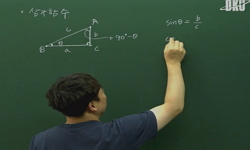Tall buildings have been traditionally designed to be symmetric rectangular, triangular or circular in plan, in order to avoid excessive seismic-induced torsional vibrations due to eccentricity, especially in seismic-prone regions like Japan. However,...
http://chineseinput.net/에서 pinyin(병음)방식으로 중국어를 변환할 수 있습니다.
변환된 중국어를 복사하여 사용하시면 됩니다.
- 中文 을 입력하시려면 zhongwen을 입력하시고 space를누르시면됩니다.
- 北京 을 입력하시려면 beijing을 입력하시고 space를 누르시면 됩니다.

Aerodynamic and Flow Characteristics of Tall Buildings with Various Unconventional Configurations
한글로보기https://www.riss.kr/link?id=A102075660
- 저자
- 발행기관
- 학술지명
- 권호사항
-
발행연도
2013
-
작성언어
English
- 주제어
-
등재정보
SCOPUS
-
자료형태
학술저널
-
수록면
213-228(16쪽)
- DOI식별코드
- 제공처
-
0
상세조회 -
0
다운로드
부가정보
다국어 초록 (Multilingual Abstract)
Tall buildings have been traditionally designed to be symmetric rectangular, triangular or circular in plan, in order to avoid excessive seismic-induced torsional vibrations due to eccentricity, especially in seismic-prone regions like Japan. However, recent tall building design has been released from the spell of compulsory symmetric shape design, and free-style design is increasing. This is mainly due to architects' and structural designers' challenging demands for novel and unconventional expressions. Another important aspect is that rather complicated sectional shapes are basically good with regard to aerodynamic properties for crosswind excitations, which are a key issue in tall-building wind-resistant design. A series of wind tunnel experiments and numerical simulation have been carried out to determine aerodynamic forces and wind pressures acting on tall building models with various configurations: corner cut, setbacks, helical and so on. Dynamic wind-induced response analyses of these models have also been conducted. The results of these experiments have led to comprehensive understanding of the aerodynamic characteristics of tall buildings with various configurations.
동일학술지(권/호) 다른 논문
-
Field Measurements of the New CCTV Tower in Beijing
- Council on Tall Building and Urban Habitat Korea
- Xu, Y.L.
- 2013
- SCOPUS
-
Performance of Tall Buildings in Urban Zones: Lessons Learned from a Decade of Full-Scale Monitoring
- Council on Tall Building and Urban Habitat Korea
- Kijewski-Correa, T.
- 2013
- SCOPUS
-
Brâncuşi Endless Column: A Masterpiece of Art and Engineering
- Council on Tall Building and Urban Habitat Korea
- Solari, Giovanni
- 2013
- SCOPUS
-
Peak Pressures Acting on Tall Buildings with Various Configurations
- Council on Tall Building and Urban Habitat Korea
- Bandi, Eswara Kumar
- 2013
- SCOPUS




 ScienceON
ScienceON


